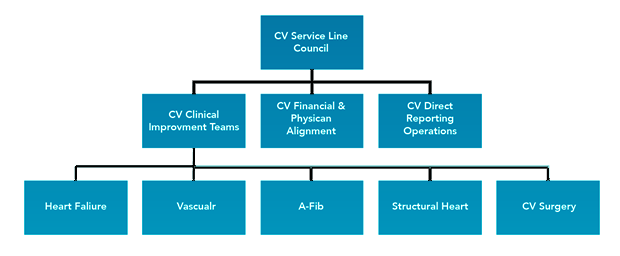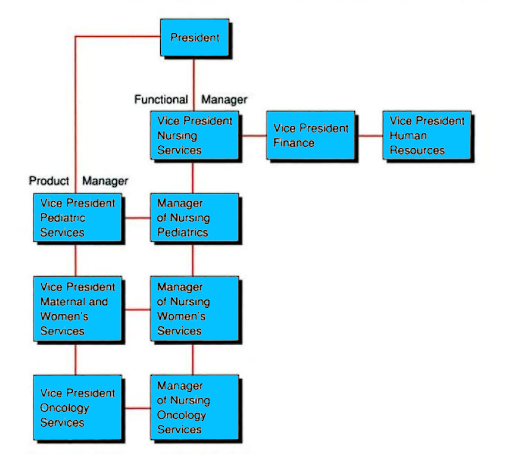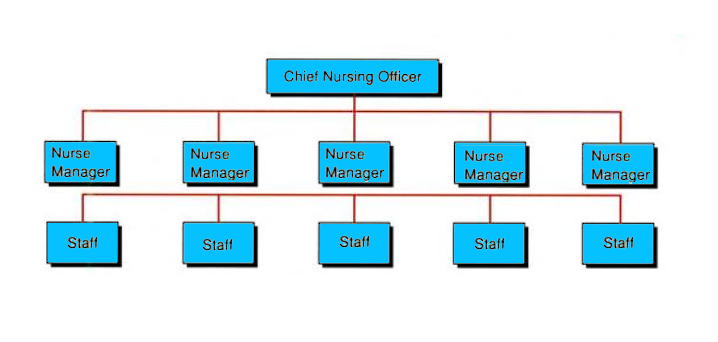The effectiveness of corporate enterprises depends on numerous factors, and one of the most important of them is the organizational structure. Essentially, the way responsibilities are distributed among employees in the company directly affects its operations and internal processes. There are several organizational structures which are extensively utilized by enterprises around the world, and the four main ones are functional, service line, matrix, and flat. At the same time, each of these structures can also be successfully applied in the sphere of healthcare in a clinical environment.

Functional organizational structure provides organizations with a clearly defined hierarchy which must significantly facilitate operations. The hierarchy consists of different levels, where employees are grouped in terms of their skills, roles in the organization, and specialty (Duncan et al., 2018). The standard name for each hierarchical level is the department which is governed by a certain leader. The entire structure also has one main leader, who is usually called a chief executive officer and who is tasked with overseeing the organization and work of different departments within it. The primary advantage of the functional structure is clearly defined role distribution and well-defined boundaries, which contributes to the high level of expertise of every department. Functional organizational structure is the one which is used in many clinical environments, including in the hospital I work for. The mission statement of functional organizations can be the following: “We are committed to delivering a wide variety of healthcare services of the highest quality to all patients.” The statement reflects the fact that although functional organizations are grouped into departments with clearly-defined responsibilities, they deliver comprehensive care to patients.

The service line is another organizational structure which is commonly used in the clinical setting since it delivers effective results to hospitals. The service line structure does not rely on departments but rather on actual service lines which simultaneously include financial, operational, and strategic aspects (Daft, 2020). Service line structures are often utilized by larger organizations which need to address certain inefficiencies of their services (Duncan et al., 2018). In the sphere of healthcare, service line organizations are based on providing services to patients who share the same attributes. For instance, there can be service line organizations targeting the needs of clients requiring inpatient or outpatient care or those who have conditions belonging to the Major Disease Categories. Thus, service lines tend to have a particular scope of operation addressing the specific needs of patients. For instance, there can be a cardiovascular service line which provides all basic services in the field of cardiology. The structure in question can be characterized by the following mission statement: “We are dedicated to providing professional and specialized healthcare services for people with cardiovascular conditions.” The mission statement highlights the ability to deliver specialized care by the organization due to its narrow scope.

Matrix is also a viable organizational structure which many healthcare organizations employ and successfully implement in the clinical setting. Matrix is a structure which integrates both the function and product, moreover, the latter is the end result of the former (Daft, 2020). Instead of pursuing only the standard rigid hierarchy, matrix enables organizations to superimpose a horizontal management structure over the vertical one. Essentially, the matrix is based on dual authority relationships where subordinates have two leaders to report to. At the same time, the matrix provides more flexibility since it implies working in specialized teams which oversee particular areas such as cardiology. Matrixes enable leaders to be accountable across the entire organization, which lets the hospital address possible overlaps and thus improve the efficiency of operations. Based on the above-mentioned details, the mission statement of matrix organizations can be the following: “We value the time of your clients and therefore provide comprehensive, personalized, and efficient services.” The mission statement highlights the capacity of matrix structure organizations to deliver an exhaustive set of services in a fast manner and in accordance with the needs of the patients.

Finally, there is also a flat organizational structure which is used primarily to establish a more decentralized clinical environment and decision-making. Organizations embracing flat structures remove the existence or minimize the significance of hierarchies and make the chain of command more horizontal (Scandura, 2020). Although flat organizations still retain line authority, professionals working directly with patients receive more freedom in terms of their decision-making. As a result, flattened organizations tend to overcome many problems related to bureaucracy. The mission statement of a flat structure organization can be the following: “We strive to provide inexpensive and personalized services to all patients while promoting their safety and positive health outcomes.” The mission statement demonstrates that due to decentralization, flattened organizations can provide more patient-oriented services which are also low-cost due to less bureaucracy and fewer managers.
Healthcare organizations can choose among several effective organizational structures, the most notable of which are functional, service line matrix, and flat. Each of the structures has its strengths and weaknesses; therefore, it is essential to take into consideration all factors the organization faces. The functional structure is the one which is used in my workplace, and its main characteristics are strict hierarchy and the provision of specialized but comprehensive healthcare services.
References
Daft, R. (2020). Organization theory & design. Cengage Learning.
Duncan, W., Ginter, P., & Swayne, L. (2018). The strategic management of health care organizations (8th ed.). John Wiley & Sons.
Scandura, T. (2020). Essentials of organizational behavior: An evidence-based approach (3d ed.). SAGE Publications.